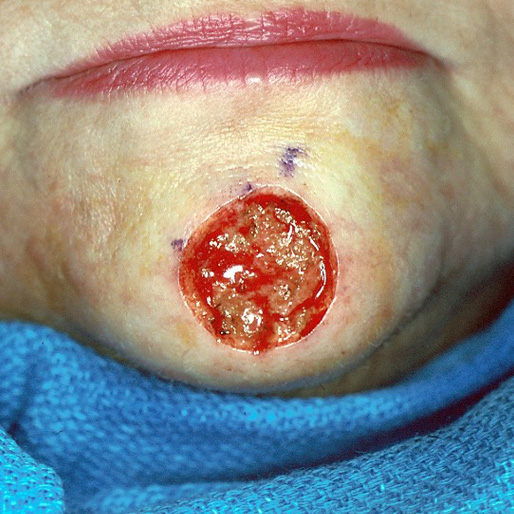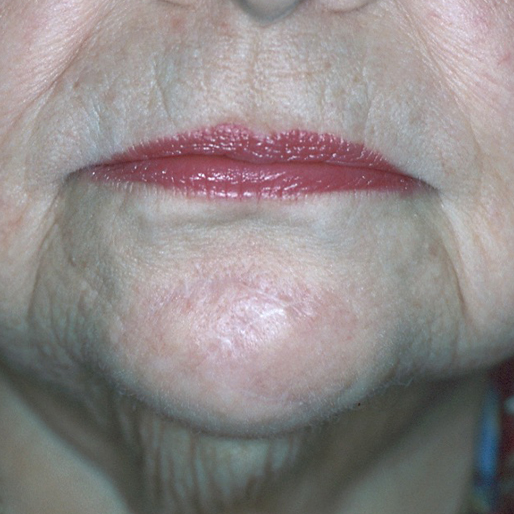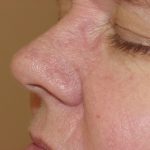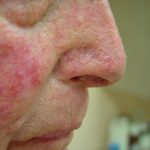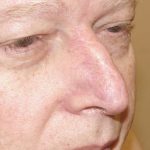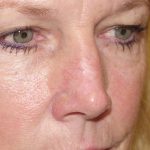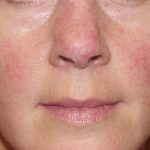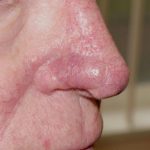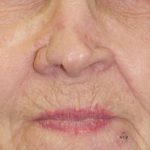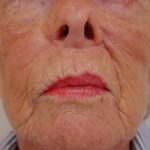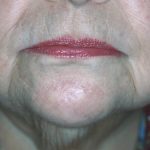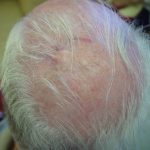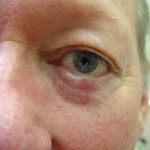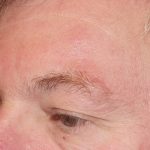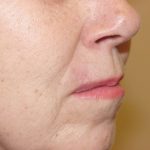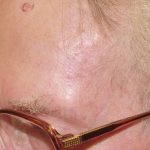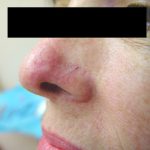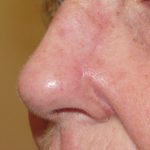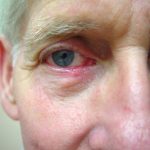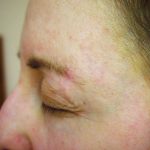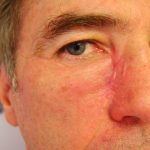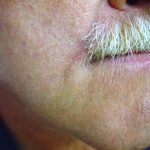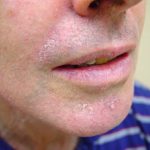This patient was referred by a plastic surgeon who was concerned about the aggressive histology of this morpheaform basal cell carcinoma. Plastic surgeons typically remove skin cancers with standard excision with permanent pathology (results are available within a week) or with frozen sections in the hospital or surgery center (results within minutes), however both of these excision techniques rely on margin control with standard histologic examination that looks at less than 1% of the true surgical margin. In contrast, Mohs surgery examines 100% of the surgical margin to provide the highest possible cure rate. Following Mohs surgery, a large defect was present on the central chin. The options for this defect included a linear closure, adjacent tissue transfer or flap, a full thickness skin graft, or allowing the wound to heal in on its own over a period of many weeks. The cosmetic considerations of the defect include the centra facial location, proximity to the lower lip, patient’s skin color and importance to not impact the function of the lip and surrounding muscles. A linear closure would violate the cosmetic unit of the lip and chin, a full thickness skin graft and granulation would result in a suboptimal outcome in the majority of cases. A flap or adjacent tissue transfer utilizes the adjacent skin of the same color, thickness and tension, and if executed in a manner that minimizes impact on the lower lip, be likely provide the best result. Dr. Morganroth has repaired defects of this size and location countless times over the past three decades and has perfected the bilateral rotation flap to give the best possible result. This repair choice contains the reconstruction incisions and undermining to the chin cosmetic unit avoiding any impact on the lower lip or melolabial folds where scars are harder to hide. The outcome in the after photos consists of a hard to see geometric scar contained entirely in the chin cosmetic unit.

